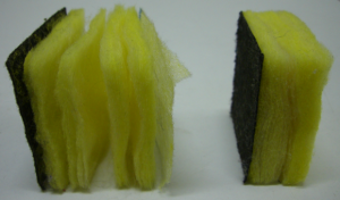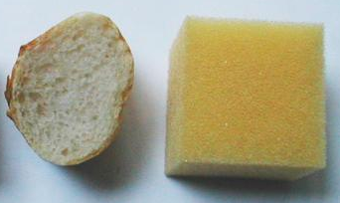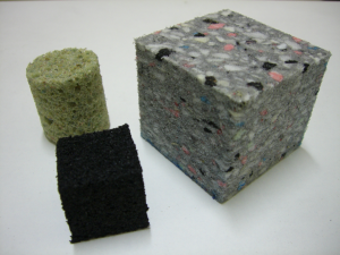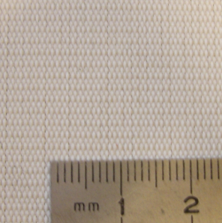Basics of Materials
Material classes
Acoustical materials can be classified in three groups depending on their components, manufacturing process and properties.
Fibrous materials and alike (e.g. felts)
Glass, rock, mineral wools. Felts
Foams and cellular materials
Mainly polymer foams
Granular materials
A fourth group may be used for facings and perforated panels.
Fibrous materials

Foams and cellular materials
Cellular materials are the results of a foaming process applied to raw mater.
On the left: a piece of bread, on the right: a polymer foam sample.

Granular materials
Granular materials are composed of agglomerate grains with a characteristic length larger than 0.1 mm approximately. Materials composed of recycled mater usually belong to this class of materials.
Green sample: a material made of carpet wastes (wool fibers and plastic grains), black sample: a material made of tire wastes, grey sample: a material made of fibrous and polymer wastes.

Facings and perforated panels
This group of materials includes metal or plastic perforated panels and perforated screens. These materials are characterized by a small thickness (from few micrometers to few millimeters thick). Screens made off fibers have usually no specific pattern (non woven screens) while screens or perforated plates made off polymers or metals have usually a periodic perforation pattern.
A Modulight-Acoustis50 perforated screen sample. This screen presents a square perforation pattern and a perforation rate of 0.90.

